|||||||||||| XH MAR BETHLEHEM
AQUECEDOR DE FLUIDO TÉRMICO a biomassa
A XH MAR BETHLEHEM dispõem de serviços diferenciados tanto para as manutenções programadas, quanto para solucionar problemas em situações emergenciais de seus clientes, contando com peças sobressalentes e de reposição em estoque.
BIOMASS FIRED THERMAL FLUID HEATER
Due to a competitive market, XH MAR BETHLEHEM has developed its own thermal fluid heaters for the industry, presenting a complete idea for heaters in the model for solid fuels.
|||||||||||| XH MAR BETHLEHEM
BIOMASS FIRED THERMAL FLUID HEATER
Due to a competitive market, XH MAR BETHLEHEM has developed its own thermal fluid heaters for the industry, presenting a complete idea for heaters in the model for solid fuels.
TECHNICAL SPECIFICATION
- Capacity: from 500.000 kcal/h to 16.000.000 kcal/h
- Temperature: up to 400ºC
- Temperature Differential: 20ºC or 40ºC
- Standards: DIN 4754
- Oil: mineral or synthetic
- Grate: Drilled or Moving Level
- Coil: Cylindrical (spirals) or Modular (radiators)

CARACTERÍSTICAS TÉCNICAS
- Capacidade: 500.000 kcal/h à 16.000.000 kcal/h.
- Temperatura: Máxima de 400°C.
- Diferencial de Temperatura: 20°C ou 40°C.
- Norma: DIN 4754.
- Óleos: Mineral ou Sintético.
- Grelha: Drilled ou Piso Móvel.
- Serpentina: Cilíndrica (Espirais) ou Modular (Radiadores).

TECHNICAL SPECIFICATION
- Capacity: from 500.000 kcal/h to 16.000.000 kcal/h
- Temperature: up to 400ºC
- Temperature Differential: 20ºC or 40ºC
- Standards: DIN 4754
- Oil: mineral or synthetic
- Grate: Drilled or Moving Level
- Coil: Cylindrical (spirals) or Modular (radiators)



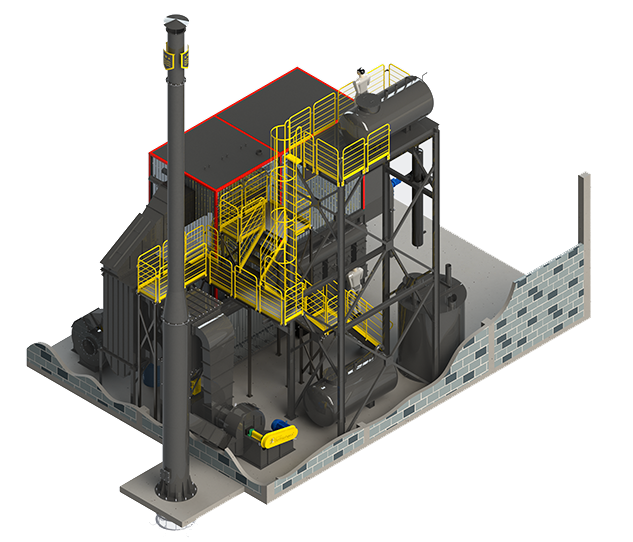


STRENGTHS OF THE EQUIPMENT
- Absence of corrosion in the equipment and piping.
- Absence of thermal oil piping in the furnace or in the combustion chamber.
- Counterflow in all the way between the thermal oil and the combustion gases, with the gases exiting the chimney in a temperature below 200°C.
- Extreme precision in the regulation of the control temperatures.
- Drilled Grate Model, technology developed by XH MAR Bethlehem, allowing an adequate combustion and having a very low cost of maintenance of the parts, such as hydraulics and castings, for not having mechanical moving parts.
- Burning of fuels with high humidity content.
- Homogeneous thermal oil temperature throughout the coil.
STRENGTHS OF THE EQUIPMENT
- Absence of corrosion in the equipment and piping.
- Absence of thermal oil piping in the furnace or in the combustion chamber.
- Counterflow in all the way between the thermal oil and the combustion gases, with the gases exiting the chimney in a temperature below 200°C.
- Extreme precision in the regulation of the control temperatures.
- Drilled Grate Model, technology developed by XH MAR Bethlehem, allowing an adequate combustion and having a very low cost of maintenance of the parts, such as hydraulics and castings, for not having mechanical moving parts.
- Burning of fuels with high humidity content.
- Homogeneous thermal oil temperature throughout the coil.



DOWNLOAD OUR CATALOGUE
Check out more about our Biomass Thermal Fluid Heater
DOWNLOAD OUR CATALOGUE
Check out more about our Biomass Thermal Fluid Heater
CONSTRUCTION DETAILS
- Manufactured with membrane walls and modular radiators inside, coupled to a dry furnace composed of refractory, concrete and ceramic felt and mounted on the Drilled grate model, developed with XH MAR BETHLEHEM technology.
- Compact and robust construction model that results in an efficient thermal oil heater above the average found on the current market.
- No ash accumulation between the coils, avoiding undesired stops for cleaning.
- No thermal oil pipes on the grate and combustion chamber, avoiding premature degradation of the thermal oil.
CONSTRUCTION DETAILS
- Manufactured with membrane walls and modular radiators inside, coupled to a dry furnace composed of refractory, concrete and ceramic felt and mounted on the Drilled grate model, developed with XH MAR BETHLEHEM technology.
- Compact and robust construction model that results in an efficient thermal oil heater above the average found on the current market.
- No ash accumulation between the coils, avoiding undesired stops for cleaning.
- No thermal oil pipes on the grate and combustion chamber, avoiding premature degradation of the thermal oil.
MAIN APPLICATIONS
Heat supply through thermal oil for industrial processes in the segments of food, cellulose, plywood, wood, chemicals, textiles and others.
- Food: In boiling pots, fat disintegration, edible oil processing, distillation and acid fractionation.
- Rubbers and Plastics: In heating autoclaves, moulds, presses and rolls.
- Cellulose, Paper and Cardboard: In heaters for drying cylinders, chambers, rolls and calenders.
- Plywood: Heating of press radiators.
- Wood: Heating of kilns and ovens.
- Chemicals and Petrochemistry: In heating agitators, autoclaves, resin reactors, dryers.
- Textiles: In heatsetting, for fixing dyes, plastification of fabrics, drying in general and treatment of fibers.
- Heat and Surface Treating: In heated baths, phosphating and surface coatings.
- Others: In hospitals, laundries, asphalt and paving plants, drying of base for soap and sludge.
MAIN APPLICATIONS
Heat supply through thermal oil for industrial processes in the segments of food, cellulose, plywood, wood, chemicals, textiles and others.
- Food: In boiling pots, fat disintegration, edible oil processing, distillation and acid fractionation.
- Rubbers and Plastics: In heating autoclaves, moulds, presses and rolls.
- Cellulose, Paper and Cardboard: In heaters for drying cylinders, chambers, rolls and calenders.
- Plywood: Heating of press radiators.
- Wood: Heating of kilns and ovens.
- Chemicals and Petrochemistry: In heating agitators, autoclaves, resin reactors, dryers.
- Textiles: In heatsetting, for fixing dyes, plastification of fabrics, drying in general and treatment of fibers.
- Heat and Surface Treating: In heated baths, phosphating and surface coatings.
- Others: In hospitals, laundries, asphalt and paving plants, drying of base for soap and sludge.
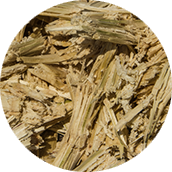




BAMBOO
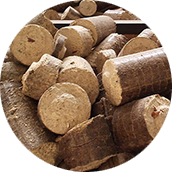


BRIQUETTE



NAPIER GRASS
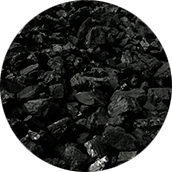


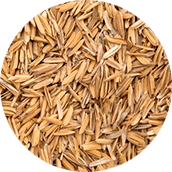


RICE HULLS


SUGARCANE BAGASSE



BAMBOO



BRIQUETTE



NAPIER GRASS



COAL



RICE HULLS
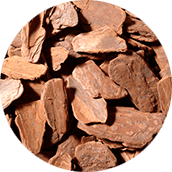


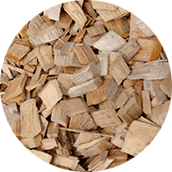





INDUSTRIAL SLUDGE
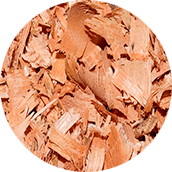


WOOD SHAVING
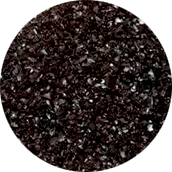


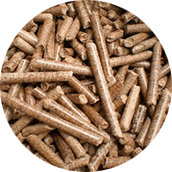


PELLETS






WOODCHIP



INDUSTRIAL SLUDGE



WOOD SHAVING



COAL COKE BREEZE



PELLETS
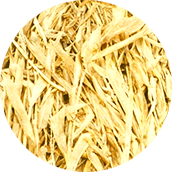

CORN STRAW
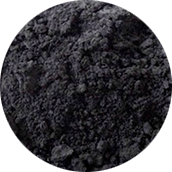

COAL DUST
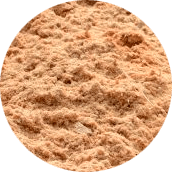

SAW POWDER
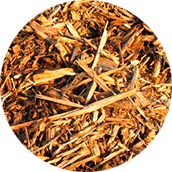

AGRICULTURAL WASTE
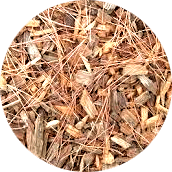

FOREST RESIDUES
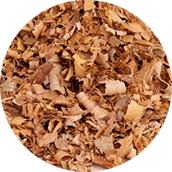

SAWDUST
AUXILIARY EQUIPMENT FOR A THERMAL FLUID HEATER
AUXILIARY EQUIPMENT FOR A THERMAL FLUID HEATER
- Thermal oil circulating pump
- Gear pump
- Emergency pump (by combustion)
- Air and gas ducts
- Draft fan
- Baghouse filter
- Multicyclone filter
- Microcyclone filter
- Alarm, control and monitoring instruments
- Walkways and platforms
- Air preheaters
- Thermal seal
- Biomass dosing silo
- Expansion tank
- Drain tank
- Cooling tank
- Mechanical seal tank
- Sample cooler
- Ash handling system
- Interconnecting piping for thermal fluid
- Block and control valve
- Primary air fan
- Secondary air fan
- Thermal oil circulating pump
- Gear pump
- Emergency pump (by combustion)
- Air and gas ducts
- Draft fan
- Baghouse filter
- Multicyclone filter
- Microcyclone filter
- Alarm, control and monitoring instruments
- Walkways and platforms
- Air preheaters
- Thermal seal
- Biomass dosing silo
- Expansion tank
- Drain tank
- Cooling tank
- Mechanical seal tank
- Sample cooler
- Ash handling system
- Interconnecting piping for thermal fluid
- Block and control valve
- Primary air fan
- Secondary air fan
IMPORTANT PRECAUTIONS FOR A BETTER LIFESPAN OF YOUR THERMAL OIL
IMPORTANT PRECAUTIONS FOR A BETTER LIFESPAN OF YOUR THERMAL OIL
Although stable and durable, due to the numerous temperature variations that the thermal oil goes through during the cycle, it can be degraded by oxidation and/or cracking over this period, which can lead to reduced heat transfer rates, erosion of pump rotors, clogging of pipes and lower lifespan of the thermal oil. It is recommended to analyse the thermal oil every six months to check the flash point, asphaltene content, iron content, viscosity and others.
Although stable and durable, due to the numerous temperature variations that the thermal oil goes through during the cycle, it can be degraded by oxidation and/or cracking over this period, which can lead to reduced heat transfer rates, erosion of pump rotors, clogging of pipes and lower lifespan of the thermal oil. It is recommended to analyse the thermal oil every six months to check the flash point, asphaltene content, iron content, viscosity and others.
Oxidation: This happens mainly when there is contamination by water or by another product or when there is no inert atmosphere in the expansion tank (presence of oxygen), resulting in the formation of a “gel” in the thermal fluid, increasing its viscosity and not having a reduction in the flash point, which can be avoided with inertization of nitrogen and pressurization of the expansion tank.
Cracking: This happens mainly from an overheating of the system, generating a decrease in viscosity and lowering the flash point, compromising the safety of the system. It causes an increase of “asphaltene”, which is a solid particle that adheres to the system’s pipes, jeopardizing thermal exchange and the lifespan of the thermal fluid.
Oxidation: This happens mainly when there is contamination by water or by another product or when there is no inert atmosphere in the expansion tank (presence of oxygen), resulting in the formation of a “gel” in the thermal fluid, increasing its viscosity and not having a reduction in the flash point, which can be avoided with inertization of nitrogen and pressurization of the expansion tank.
Cracking: This happens mainly from an overheating of the system, generating a decrease in viscosity and lowering the flash point, compromising the safety of the system. It causes an increase of “asphaltene”, which is a solid particle that adheres to the system’s pipes, jeopardizing thermal exchange and the lifespan of the thermal fluid.







LOW SOLIDIFICATION TEMPERATURE







GOOD THERMAL STABILITY







HIGH THERMAL CONDUCTIVITY







HIGH FLASH POINT







CHEMICALLY INERT







LOW VISCOSITY
SCHEMATIC MODELS OF THE SYSTEMS MOST USED BY OUR CLIENTS
SUBTITLE: 1 – Thermal Fluid Heater; 2 – Heat Consumer (Press, Heat Setter and others); 3 – Circulating Pump; 4 – Expansion Tank; 5 – Drain Tank or Run-down Tank; 6 – Expansion Piping; 7 – Discharge or Overflow Piping; 8 – Connection to atmosphere; 9 – Safety Valve of the Thermal Oil System; 10 – Safety Valve of the Expansion Tank.
SYSTEM 1
Pressurised thermal fluid system with the expansion tank at atmospheric pressure (conventional system).
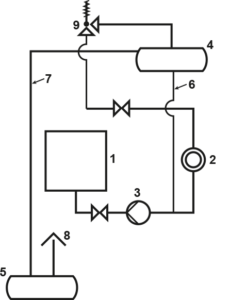



SYSTEM 2
Pressurised thermal fluid system with the expansion tank insulated with inert gas (System which guarantees a longer lifespan for the thermal oil).
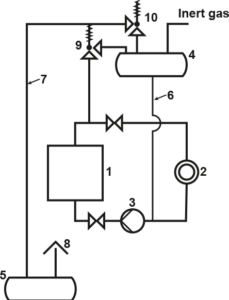



ESQUEMÁTICO DOS SISTEMAS MAIS UTILIZADOS EM NOSSOS CLIENTES
Legenda: 1 – Aquecedor de Fluido Térmico; 2 – Consumidor de Calor (Prensa, Rama e outros); 3 – Bombas de Circulação; 4 – Tanque de Expansão; 5 – Tanque de Dreno ou Recebimento; 6 – Tubulação de Expansão; 7 – Tubulação de Descarga ou Transbordo; 8 – Conexão para atmosfera; 9 – Válvula de Segurança do Sistema de Óleo Térmico; 10 – Válvula de Segurança do Tanque de Expansão.
SISTEMA 1
Sistema de fluido térmico pressurizado com o tanque de expansão na pressão atmosférica (Sistema convencional).




SISTEMA 2
Sistema de fluido térmico pressurizado com o tanque de expansão isolado com gás inerte. (Sistema onde garante maior vida útil do óleo térmico).




SCHEMATIC MODELS OF THE SYSTEMS MOST USED BY OUR CLIENTS
SUBTITLE: 1 – Thermal Fluid Heater; 2 – Heat Consumer (Press, Heat Setter and others); 3 – Circulating Pump; 4 – Expansion Tank; 5 – Drain Tank or Run-down Tank; 6 – Expansion Piping; 7 – Discharge or Overflow Piping; 8 – Connection to atmosphere; 9 – Safety Valve of the Thermal Oil System; 10 – Safety Valve of the Expansion Tank.
SYSTEM
Pressurised thermal fluid system with the expansion tank at atmospheric pressure (conventional system).




SYSTEM 2
Pressurised thermal fluid system with the expansion tank insulated with inert gas (System which guarantees a longer lifespan for the thermal oil).




IMPORTANT PRECAUTIONS FOR YOUR SAFETY AND THE SAFETY OF YOUR THERMAL OIL HEATER
- Do not fill the system with cold thermal oil when the operating temperature is above 90°C.
- Do not reuse thermal oil when there is suspicion of water contamination.
- Do not carry out tasks without specific working instructions.
- Do not carry out maintenance on components with a temperature above 60°C.
- Do not jumper any electrical components, control and safety instruments.
CUIDADOS IMPORTANTES PARA SUA
SEGURANÇA E SEU AQUECEDOR DE ÓLEO TÉRMICO
- Não abastecer o sistema com óleo térmico frio com a temperatura de operação acima de 90°C.
- Não reaproveite óleo térmico com suspeita de contaminação por água;
- Não efetua tarefas sem instruções de trabalho determinadas.
- Não efetue manutenção em componentes com uma temperatura acima de 60°C.
- Não faça pontes elétricas (jumping) em qualquer componente elétrico, instrumento de controle e segurança.
IMPORTANT PRECAUTIONS FOR YOUR SAFETY AND THE SAFETY OF YOUR THERMAL OIL HEATER
- Do not fill the system with cold thermal oil when the operating temperature is above 90°C.
- Do not reuse thermal oil when there is suspicion of water contamination.
- Do not carry out tasks without specific working instructions.
- Do not carry out maintenance on components with a temperature above 60°C.
- Do not jumper any electrical components, control and safety instruments.
STANDARD COMPONENTS
- Bellows valves: ARI-ARMATUREN
- Frequency inverters: Danfoss
- Centrifugal Pumps: Multisteel
- Electric Motors: WEG
- Thermal Oil: Mobil
STANDARD COMPONENTS
- Bellows valves: ARI-ARMATUREN
- Frequency inverters: Danfoss
- Centrifugal Pumps: Multisteel
- Electric Motors: WEG
- Thermal Oil: Mobil
REQUEST A QUOTE
Our staff is ready to assist you
REQUEST A QUOTE
Our staff is ready to assist you












ADRESS
Highway SC 350 | N° 4851 | Downtown | CEP: 89170-000 | Laurentino/SC | Brazil
OFFICE HOURS
Monday to Friday
8:00 a.m. to 11:30 a.m.
1:30 p.m. to 5:30 p.m.
ADRESS
Highway SC 350 | N° 4851 | Downtown | CEP: 89170-000 | Laurentino/SC | Brazil
OFFICE HOURS
Monday to Friday
8:00 a.m. to 11:30 a.m.
1:30 p.m. to 5:30 p.m.
